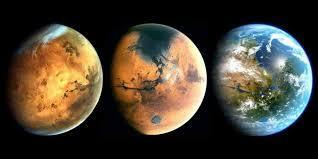
B1063
RT: https://annihilation.social/objects/061405c3-cbdd-4950-844e-1a8c2748afd7
B1063 28th liftoff
RT: https://annihilation.social/objects/061405c3-cbdd-4950-844e-1a8c2748afd7
“For centuries, the complex mathematics describing the movement of liquids and gases—from the air rushing over an airplane’s wing to the turbulent currents of the ocean—have stumped the world’s most brilliant minds. These principles are governed by a notoriously difficult set of partial differential equations (or PDEs), known as the Navier-Stokes equations, which remain one of the seven unsolved “Millennium Prize Problems” in mathematics.”
“Now, researchers at Google’s AI lab, DeepMind, have demonstrated a novel approach that’s yielding fresh insights.”
This is very useful for flow dynamics in rocket engines. 🚀
Now, researchers at Google's AI lab, DeepMind, have demonstrated a novel approach that's yielding fresh insights.
By training a type of AI known as a Graph Neural Network on complex fluid-flow simulations, the system was able to discover "surprising new solutions" to these century-old problems. The achievement "marks the first time a machine learning model has been used to discover new and verifiable solutions to a famous PDE," according to the DeepMind team.
https://finance.yahoo.com/news/google-deepmind-ai-crac...
They young guys don't give a shit and just mock the entire situation. They are the ones going to be making choices and decisions in the coming decades. And they're completely done with these apes. There will be some among the young that yearn to end the nonsense forever.
🔮 Preview :
• Flight Test 11 🚀 could occur in the October time frame
• 12 likely will be the first flight of the V3 #Starship in early 2026
• 13 and 14 probably the first orbital flight, complete with operational deployment of #Starlink satellites 🛰️
• 15 to 20 #SpaceX is likely to launch two Starships to conduct an in-orbit refueling ⛽ test no earlier than the second half of 2026
https://arstechnica.com/space/2025/08/spacex-got-good-heat-shield-data-for-starship-so-what-comes-next
#European 🇪🇺 and #Japanese 🇯🇵 #SpaceAgencies opted for traditional, expendable 🗑️ rockets instead of pushing toward reuse ♻️.
As a result, both of these competitors for commercial #satellite launches are now about a decade behind #SpaceX in terms of launch technology. If the ambitious #Starship rocket is successful, that gap could widen further https://arstechnica.com/space/2025/08/with-recent-falcon-9-milestones-spacex-vindicates-its-dumb-approach-to-reuse
The #price of heavy launches to #LEO has fallen from $65,000 💰 per kilogram to $1,500 💵 per kilogram—more than a 95 percent decrease 📉. A significant factor in the capacity equation is the potential capabilities of #Starship 🚀 https://www.mckinsey.com/industries/aerospace-and-defense/our-insights/space-launch-are-we-heading-for-oversupply-or-a-shortfall
- Annihilation Social
- https://annihilation.social/users/Starprophet
